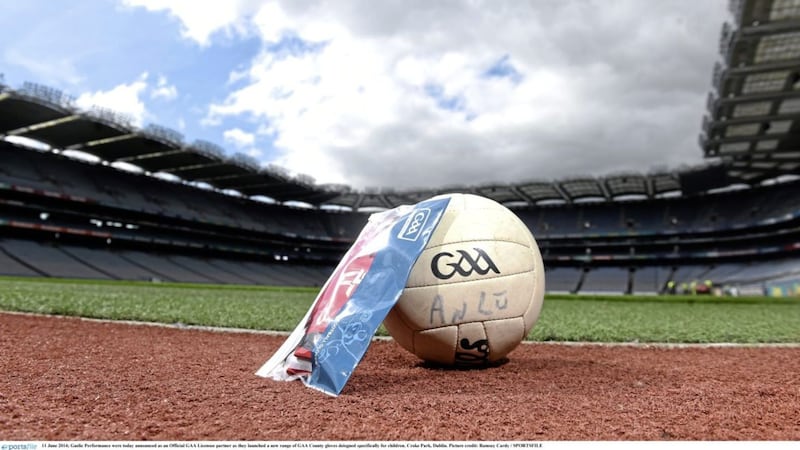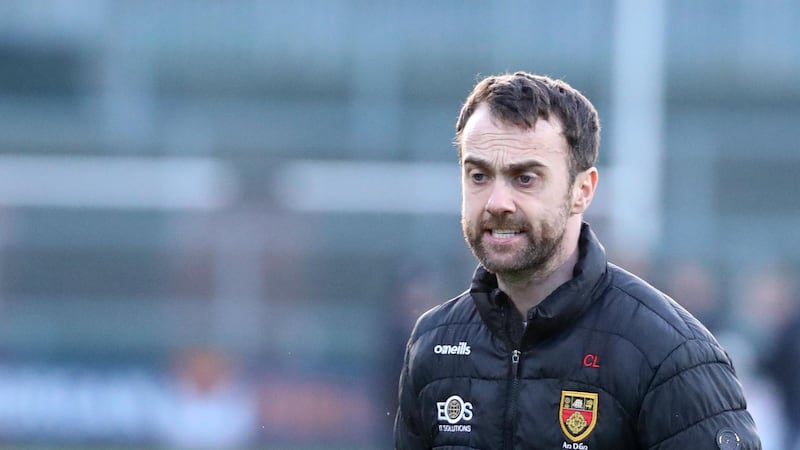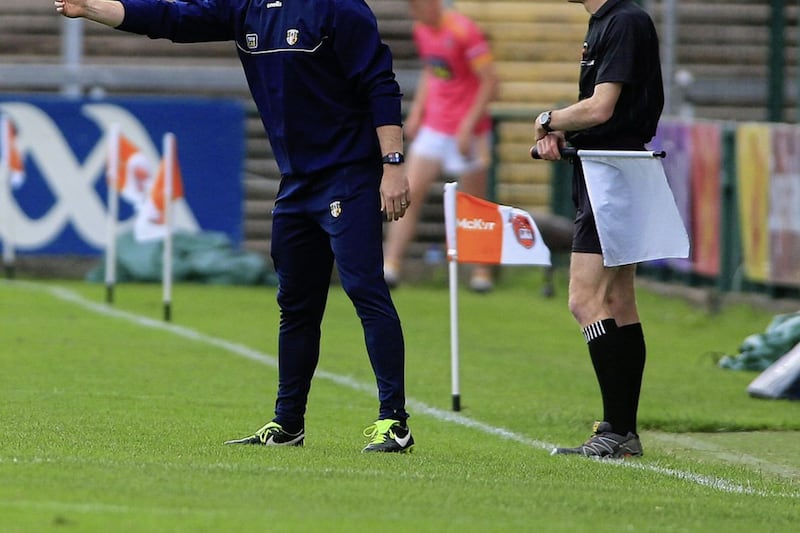MY children have started attending the club’s U6s. Fun times. If ever a sight manages to fill you with joy and fear in equal measure, it is a field full of U10s, U8s and U6s. All the hope in the world on one pitch and all the madness.
The coaches, in as fine an example of dedication and optimism as you are likely to see, go about their business with patience and care and, amazingly, you see the children engage and the skills begin to progress.
As a parent, of course, any new activity inevitably leads to requests for ‘new stuff’. Goalposts, jerseys, shorts, socks, water bottles and Under Armour have all been mentioned in the past weeks in my house.
The most urgent request has been for gloves, although I think this has less to do with superior grip and more the lovely northerly winds we have been enjoying of late.
Getting your children their first pair of gloves inevitably brings you back to your own childhood. The glove that stood out from my youth was the old-fashioned woolly kind.
Like Puma King boots, large navy knee supports, smell of deep heat, shorts closer to Speedos or jerseys closer to tents, the woolly glove deserves its place in any GAA hall of fame.
It was the glove of choice for many years simply out of the virtue of there being nothing else.
It had several stand-out ‘qualities’. Firstly, the material was usually like one of those rough itchy sweaters that your aunt that doesn’t like you bought for you.
I presume it must have been made from some sort of leftover grain sack that was at the factory when the glove manufacturers moved in.
The ‘elastic’ cuff was another interesting feature in that it would lose all semblance of elasticity if allowed to get wet – a slight design failure given the gloves’ primary usage and one that led to healthy sales of insulating tape across the country.
That wasn’t a bad thing as these gloves were also spotted regularly on building sites such was their robust nature.
They even brought out a special edition, same material just different colours. These were perhaps one of the first signs of true ‘coolness’ on the GAA field.
Presumably a limited edition, they were as hard to get a hold of as the wet ball you were trying to catch with them, but this only served to enhance their ‘pitch cred’.
Players eventually moved on, either giving up out of respect for the skin on their fingers or on the realisation that they were fairly poor in terms of their actual job of catching round leather things.
Step forward the era of the cloth gloves. Definitely a step up, but only in quite specific meteorological and pitch conditions.
Any mud rendered them useless and made it feel like you were carrying a kilo weight on each hand.
If it was only slightly damp you had to take a bottle of water and soak them and maintain this throughout the game.
These gloves also had a major elasticity problem so the insulating tape remained a key part of any kitbag.
The other issue was that they had a lifespan of about three games before the fingers appeared to have been taken a fancy to by a few giant moths.
In the right conditions, however, of properly wet but no mud, these gloves were majestic. In the era of black-only boots, the fact they didn’t look too fancy only added to their popularity.
The standard green or navy cloth glove had a cool cousin – the white cloth gloves.
These, depending on the local employment situation, were known as painters or meat factory gloves and could be hard enough to find.
‘Mugsy’, the epitomé of GAA cool, seemed to have an endless supply for a few years. They were almost see-through, but did have great grip and feel – though, again, only in those perfect “wet overhead, firm underfoot” conditions.
They were an even more elastic-free zone and so required taping from day one and had a life expectancy of about a day.
This should have deemed them useless, but their one-day effectiveness and coolness meant they often were rolled out for the big occasions.
There was also, of course, proper big goalkeeper gloves, but these were akin to playing football with one of those giant foam fingers. Barring actual keepers and, of course, Ciaran Whelan, they never caught on.
An additional but less mentioned drawback was the fact they were not much use when things turned heated. A fact obviously not lost on many goalkeepers who could be seen trying to get them off their hands as they ran towards the traditional skirmish/melee.
Always a sure sign they weren’t rushing in on a peace-keeping mission.
The wise man as always, could tell you stories of people putting on a fielding exhibition in lashing rain without a glove.
In my time, I remember Fay Devlin putting on just such a performance.
This led to many a corner-back fancying themselves to repeat the feat much to the joy of the waiting forward as the ball inevitably went through his hands.
This was quickly followed by a manager yelling at the defender, enquiring subtly where his hand garments may be and if he could kindly apply them at the earliest opportunity.
Inevitably, the gloves will be bought, but it’ll not be long until summer comes and they can learn the one tradition that remains steadfast – playing ball on a warm summer’s day with a bit of spittle on the hands.
Even the old-fashioned gloves never came close to that.








